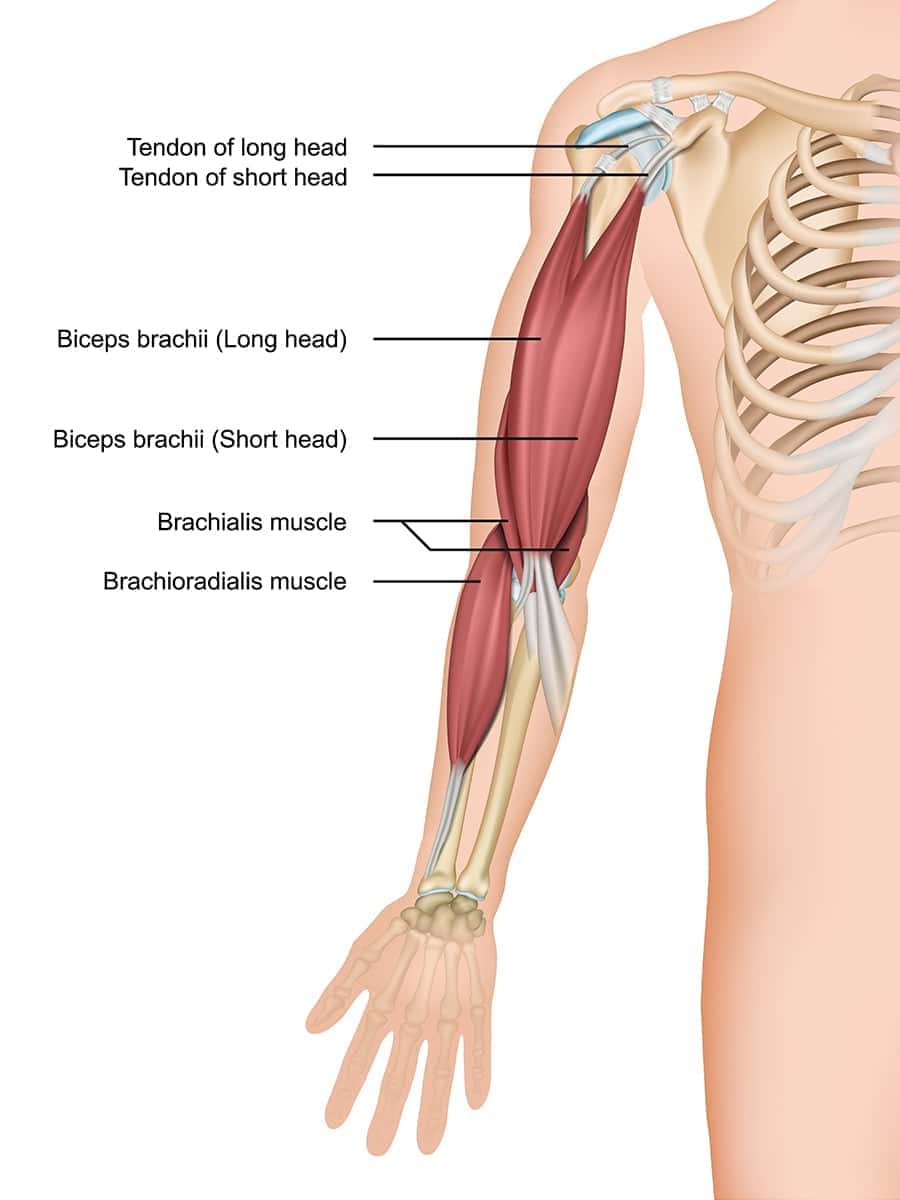Introduction
The biceps muscle is in fact one muscle with two 'heads' (the 'short head' and the 'long head') or muscle bundles, both of which attach to the shoulder separately, and which merge around halfway down the upper arm before connecting to bone at the elbow. The function of the biceps is to rotate the arm and bend the elbow.

A biceps tear or rupture generally refers to a tear in a tendon – the muscle itself can rupture but this is rare. Tendon tears can occur either at the shoulder known as a proximal biceps tendon tear, or at the elbow known as a distal biceps tendon tear. If the tear is at the shoulder it is most often the long head that is affected, if the tear is at the elbow, the tendon (the 'distal biceps tendon') generally completely separates from the bone.
Causes
Some circumstances where a biceps tear may occur include:
- Sudden injury (common with distal biceps tendon tears).
- Lifting a heavy weight* – particularly a sudden movement (common with distal biceps tendon tears).
- Falling on an outstretched hand ('FOOSH').
- Overuse of the biceps muscle.
* exercises where a tear is a greater risk include chin ups and biceps curls.
Pre-existing conditions, such as rotator cuff tears, shoulder tendinopathy and shoulder impingement can predispose a biceps tear. Other factors which may increase the risk of a biceps tear include:
- Age (older people are more at risk than younger people).
- Smoking.
- Corticosteroid use.
- Steroid use.
- Heavy lifting.
Symptoms
Common symptoms include a tearing, snapping or popping sensation when it happens, followed by sudden (and sometimes severe) pain to the shoulder at the front and/or upper arm or at the elbow, depending on the tear location.
The pain generally eases fairly quickly but a dull ache, particularly noticeable at night time or when waking may persist (although some people who have a biceps tear notice little or no pain at all, either when it occurs or afterwards).
A deformity or bulge in the muscle may also appear (often at the lower end of the upper arm), particularly apparent when compared to the muscle of the other arm. Stiffness, bruising and swelling may also appear, as well as a noticeable weakness in the elbow and/or shoulder.
Tests / Diagnosis
Diagnosis is primarily via physical examination, when you will be asked to move your arm and tighten the biceps muscle. Any noticeable gap at the inner elbow may indicate a tear. An x-ray may be needed to check whether there are any other conditions affecting the shoulder or elbow and an MRI scan may be required to check whether a tear is a complete tear or only a partial tear.
Treatment
In many cases treatments focus on easing any pain with medication and developing the strength and mobility of the arm. Surgery may be required where symptoms continue after initial treatment or where the tear is complete and regaining total arm strength is important. For surgery relating to tears at the shoulder see biceps tenodesis, for tears at the elbow see distal biceps repair.
Related Information
Shoulder tendon pain
Biceps Tenodesis
Distal Biceps Repair
Soft Tissue Management

